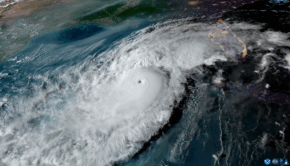Massive wave too close for comfort
Published on December 10th, 2019
A 75-foot-tall wave was recorded less than 20 miles off the California coast and scientists at UC San Diego’s Scripps Institute for Oceanography say it’s the largest individual wave ever recorded by their network of coastal buoys.
While waves this size are common in the open ocean, this one recorded at the Cape Mendocino buoy (No. 94) on the evening of Nov. 26 was unusually close to the coastline, located in a region about 280 miles north of San Francisco..
“Waves of that size usually only occur far out at sea where the wind has been blowing across a big area,” said James Behrens, the principal development engineer and manager for Scripp’s Coastal Data Information Program. “The only other station in the network that measured a wave this large is deployed 800 miles off the coast of Washington.”
The buoys also measure average wave height every 30 minutes. This wave fell within a period when the average was about 43 feet tall, the largest average ever recorded by Scripps coastal buoys. The typical average at this buoy in winter is 10 feet.
The Cape Mendocino buoy is on water that’s over 1,000 feet deep.
The wave occurred during a storm event known as a “bomb cyclone” when there’s a rapid drop in air pressure. The system slammed southern Oregon and Northern California with rain and snow and whipped up coastal waters.
“The cyclone really deepened and strengthened quite a bit and the wind behind the cyclone really amplified the waves,” said Josh Whisnant, a forecaster with the National Weather Service office in Eureka. “We had gusts over 50 mph over the water associated with the event. That churns up the ocean and builds the wave height even more.”
Scripps monitors about a half-dozen buoys off the California coast that measure wave height. Some buoys have been in operation since the 1990s and the Cape Mendocino one was installed in 2004. The data is used by the National Weather Service and other agencies to notify everyone from boaters to surfers and coastal engineers about ocean conditions.
Source: SFGATE









 We’ll keep your information safe.
We’ll keep your information safe.